Today we were looking for a bit of a challenge, so we ventured to the other side of Swampy to investigate the network of tracks in the wilderness around Silverstream and its tributaries.
 To get there we headed up Stuart St, followed it as it became Taieri Rd and then Three Mile Hill Rd, then turned right on to the Flagstaff-Whare Flat Rd. This took us past the entrance to the Pineapple Track, past Rollinsons Rd which heads up Swampy, and finally to Silverstream Valley Rd. Turning right took us immediately to the car park that marks the entrance to this tangle of walkways.
To get there we headed up Stuart St, followed it as it became Taieri Rd and then Three Mile Hill Rd, then turned right on to the Flagstaff-Whare Flat Rd. This took us past the entrance to the Pineapple Track, past Rollinsons Rd which heads up Swampy, and finally to Silverstream Valley Rd. Turning right took us immediately to the car park that marks the entrance to this tangle of walkways.
We hopped out and climbed over a stile on to the gravel road beyond.

It was not long before we got our feet wet paddling through a ford, though if we’d looked at the map we might have noticed that there’s an alternative track that would have taken us over a swing bridge instead. The calls of hidden bellbirds filtered down to us from the canopy above.
We reached the turn off to the bottom weir and went uphill instead, past a little picnic area and on to a slippery wooden board walk.
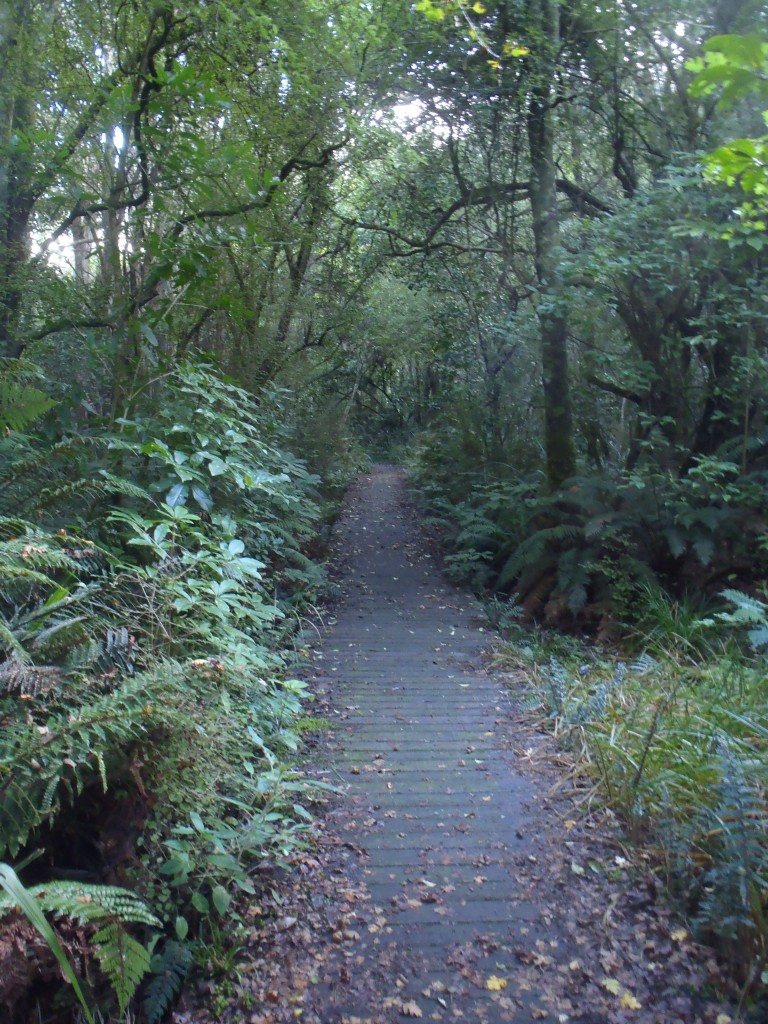
We were somewhat relieved when we were off the board walk and on to the plain dirt track beyond.

Not far into the forest we met up with the old water race which we would follow for the rest of our journey. This 29km long race was completed in 1881 to relieve Dunedin’s water woes. From the depths of this valley it took a long and winding route down to Kaikorai Valley’s southern reservoir. From there the water was by 1920 piped through the abandoned Caversham tunnel to the suburbs beyond.
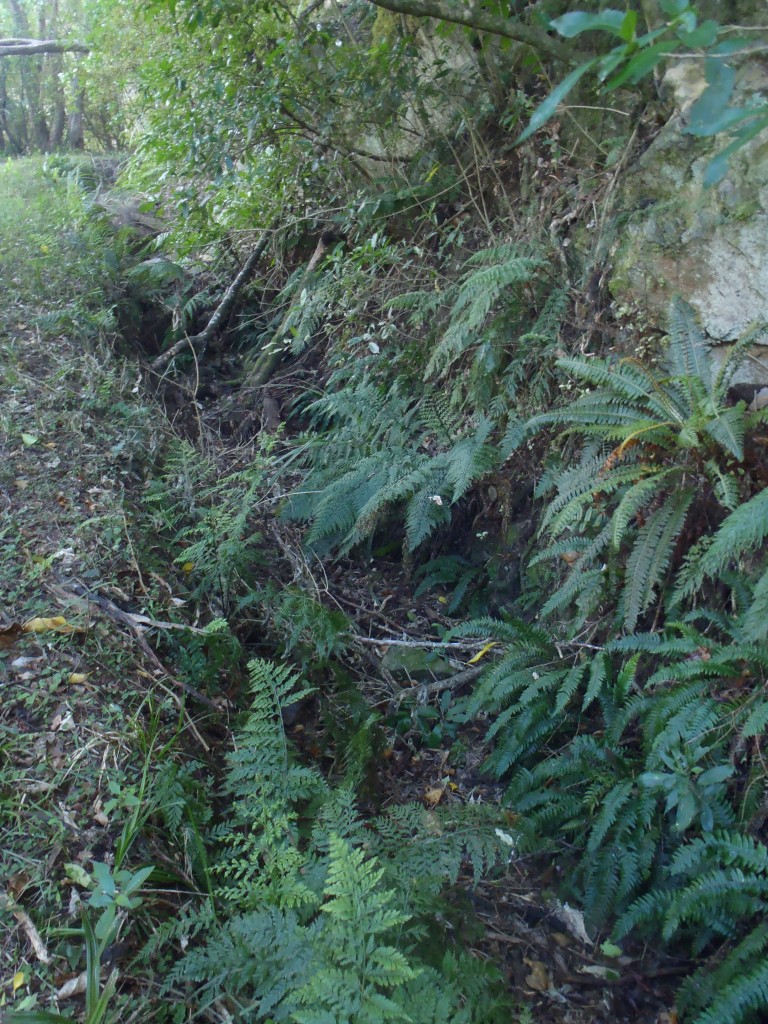
The water race was rendered obsolete in the late 1960s by underground piping, and the dry ditch is now overgrown and falling in to ruin. I wonder how the men who painstakingly dug and maintained this huge work of engineering would feel about that.
There are a couple of short aqueducts along the way as well, rusted and collapsing.
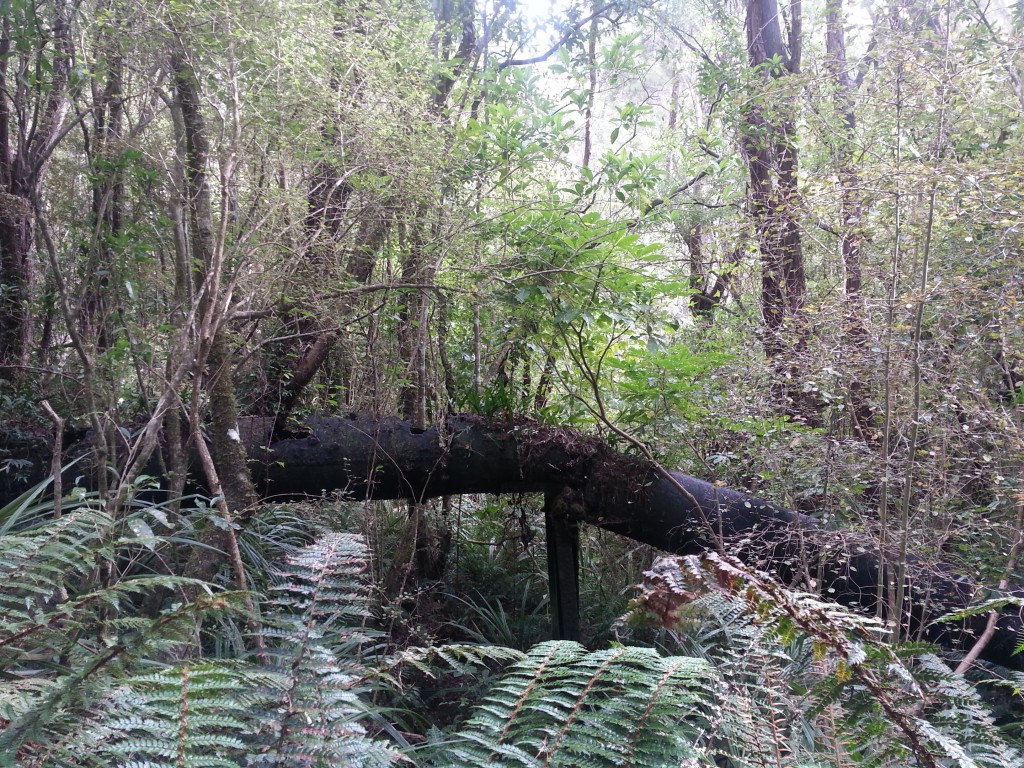
Our map said we would find the ruins of some old huts belonging to the race men, so we scanned the edges of the track eagerly. But we saw neither brick nor shingle of any ruin.
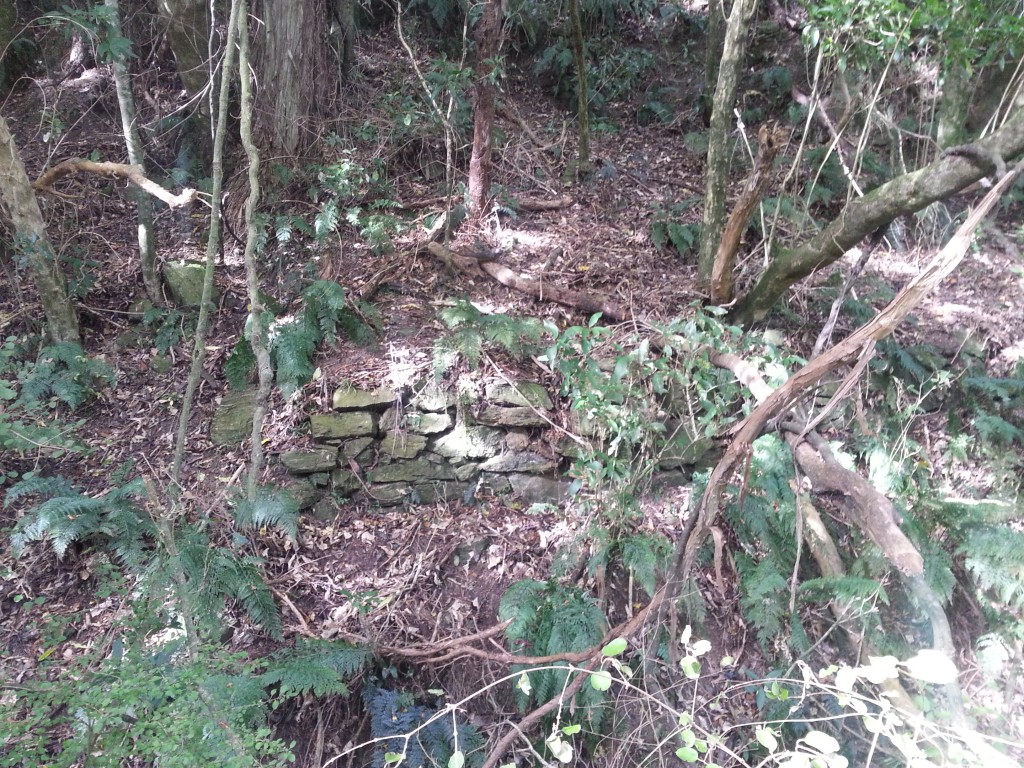
We did however manage to find another cool and unusual fungus.

We passed Little Coal Creek and soon after encountered some old pipes, dragged all the way out here and left to become part of the scenery.

The race tunnelled under a bluff here while we walked around and met it on the other side. Then we scrambled across an old slip and stopped at North Coal Creek for lunch. Above us we could hear the heavy wing beats of wood pigeons, while a little tomtit (or miromiro) kept us company while we ate.

With lunch done, we decided to turn back even though we hadn’t reached the top weir which is the origin of the water race. In our defence, our feet were getting sore!
We headed back, once again scanning the bushes thoroughly for the elusive ruined huts.

But again we found nothing as we retraced our steps. Flummoxed, we once again braved the treacherous board walk and I made a quick detour to see the bottom weir and remains of the electric pump house which was installed in 1920.
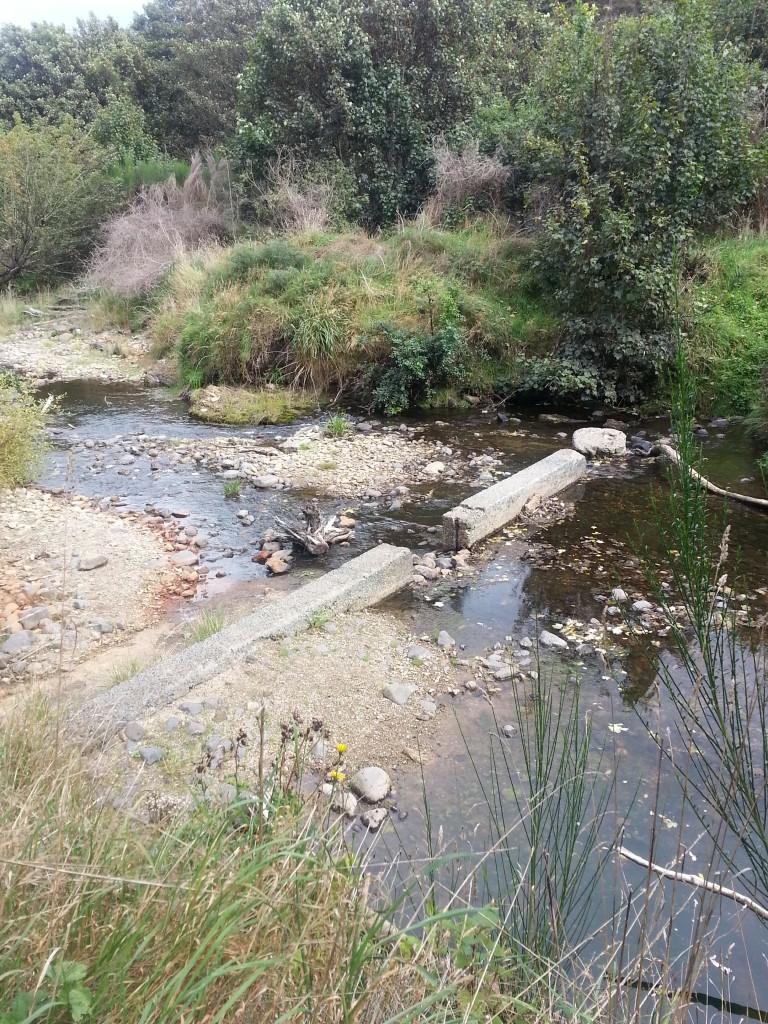
There’s not much left of the pump house save for a concrete pad and some railway sleepers hanging out into nowhere.
That was our last stop before emerging we emerged from the wilderness and gratefully returned to the couches and wifi of home.
References:


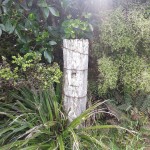

One thought on “A Ramble on Racemans Track”